Picchetti Ranch Open Space Preserve and Stevens Creek Reservoir
Picchetti Ranch Open Space Preserve and Stevens Creek Reservoir
On a Saturday threatening rain, D. and I returned to Picchetti Ranch Open Space Preserve to see the vernal pool before it dried up for the summer, and I took these pics.
There are lots of wildflowers in bloom. Here's Field Bindweed and Common Rigid Hedge Nettle.


Bee on Beaked Hawksbeard.

As the trail rises we catch a glimpse of Stevens Creek Reservoir, which is very full after a wet, rainy winter.

We go up the Bear Meadow Trail through oak woodlands, getting another view of the reservoir.


Sticky Monkeyflower, with amorous beetles, and Blue-eyed Grass.
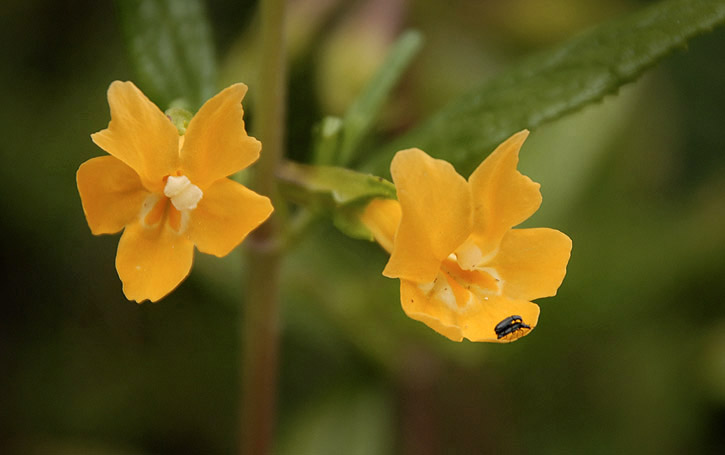

Poison oak is unavoidable in these forests. It can grow in a shrub form, or climb up a tree as a vine, up to 150'. All parts of the plant can cause a rash.


The Bear Meadow Trail, though oak woodland and grassland.

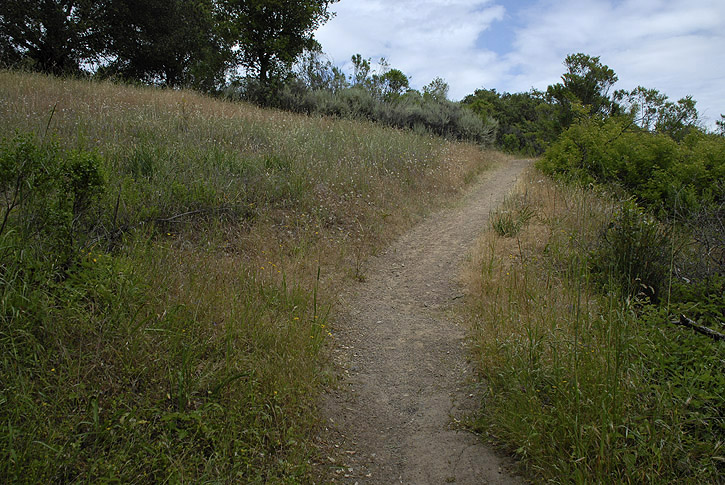
Two pics of Clarkia, one of which conceals a deadly surprise: the last thing a fly ever sees.


California Honeysuckle and Ithuriel's Spear.


Yarrow and Woodland Strawberry.
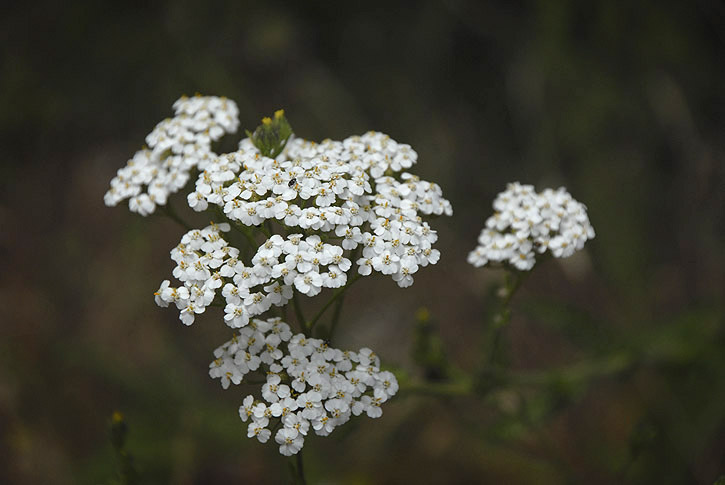


Golden Yarrow and Pitcher Sage.


Blue Elderberry and Yerba Santa.


There are some butterflies as well. Here is a Variable checkerspot butterfly on Soft Brome.

The trail goes through a stretch of chaparral on a south-facing slope.

Chamise is related to roses but does not have the same scent.

We glimpse another view of Stevens Creek Reservoir as the trail curves around the side of a hill.

The White Fairy Lantern is a stunning bloom.


Another look over the reservoir into the Santa Clara Valley, with the East Bay's Diablo Range in the background.
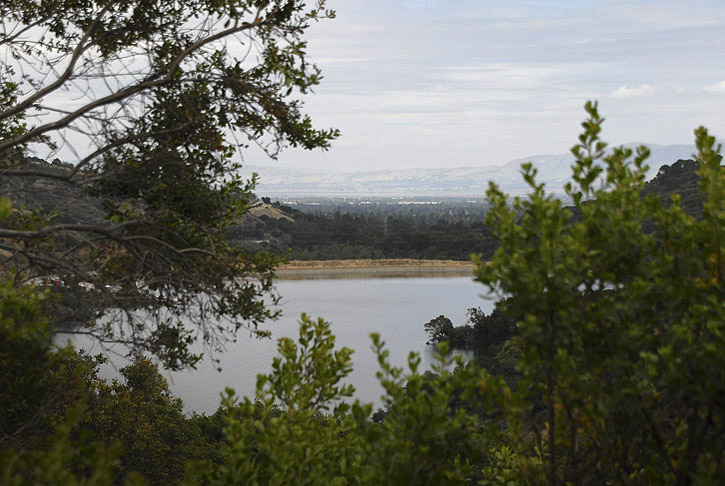
Poison oak berries are just as rash-inducing as the leaves. All parts of the plant, including twigs, bark and roots, are best avoided.

More field bindweed, a morning glory relative.

Coast Larkspur and Northern Checkerspot butterfly.
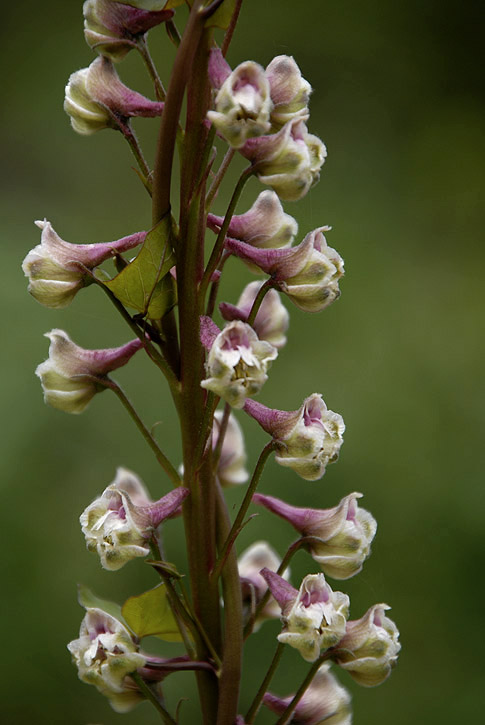

The trail brings us closer to the vernal pool.

This juvenile Northern Crab Spider resembles a tick at first glance.

California Everlasting and California Tea, a.k.a. Forest Scurfpea.


Another look over the reservoir into the Santa Clara Valley.

Beaked Hawksbeard looks like dandelions on branched stalks.

Wild oat, and an ancient plum tree with developing fruit, a remnant from the ranching days.


Mule's ears look like dwarf sunflowers.
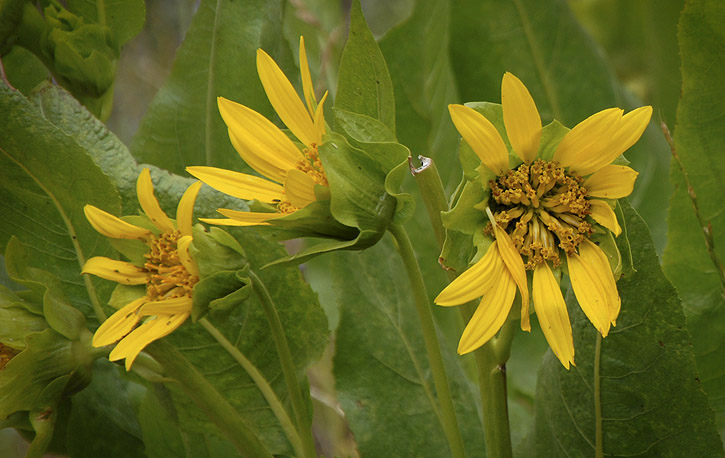
Finally we reach the pond, a seasonal wetland, or vernal pool, that provides important habitat for many wildlife species, including sensitive amphibians such as California newts, tree frogs and toads. Vernal pools fill up with winter rains but dry up for at least part of the year.
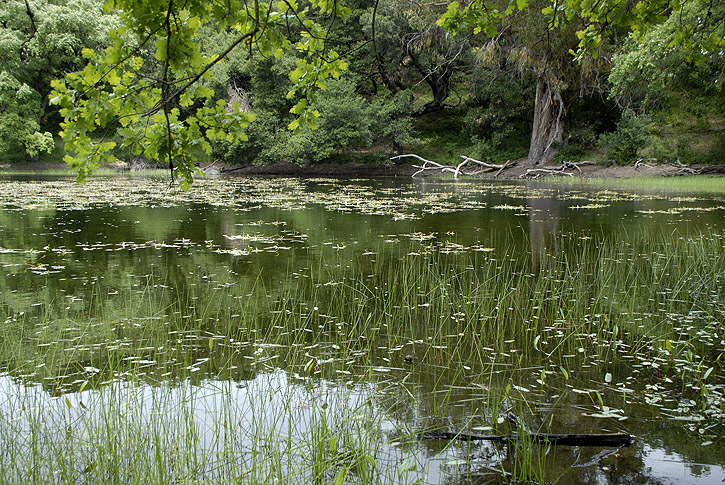

It was a completely dry meadow when we were here last October.
Today there is a mallard duck family on the water.





They are nervous in our presence and fly away after a few minutes.
More pond pics.

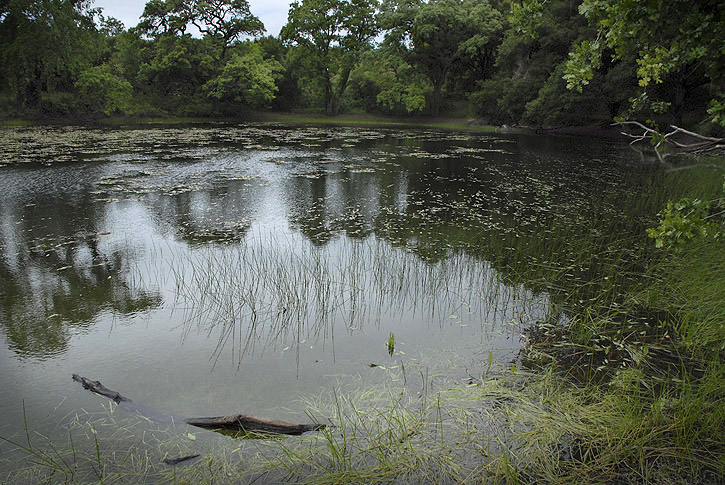
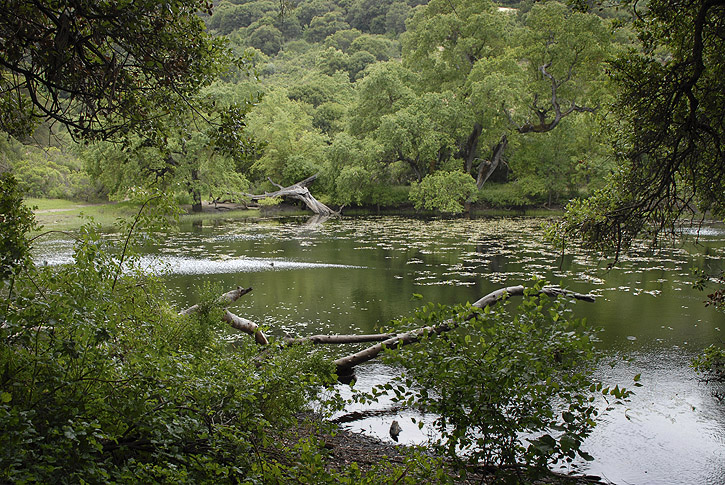
I love looking at the surface of the water, the various textures and reflections.
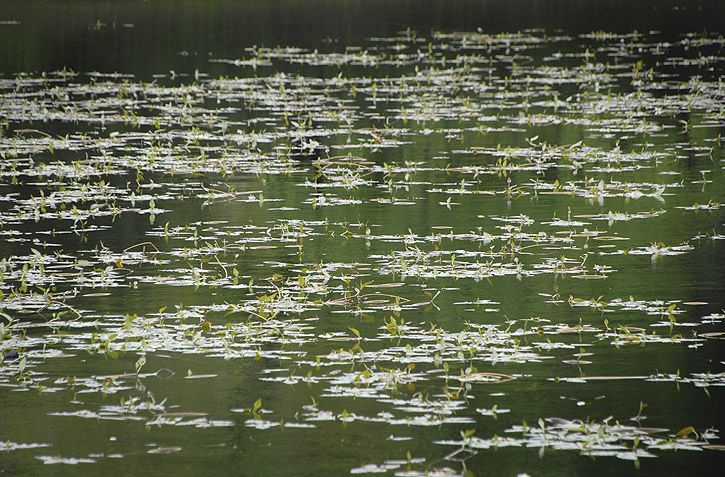





In the shallows at the southeast shore of the pond we see tadpoles in the murky water.

Hefty fallen limbs litter the shore under an enormous blue gum eucalyptus tree at the water's edge. The look like they have suffered an infestation of wood boring beetles.


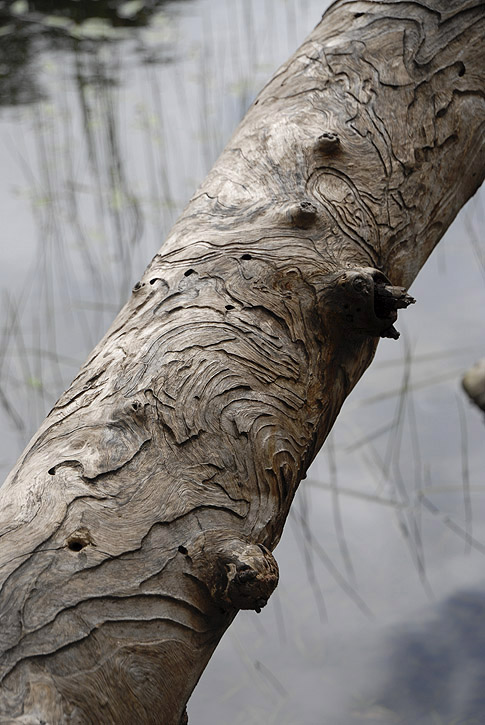
The contortions of the grain remind me of a topographical map.

The channels made by the wood boring beetles make it look like a tipsy person used a router on the limb.


On the Zinfandel Trail, we pass by a chaparral habitat.

As we head up the Orchard Loop Trail, we see pears on trees dating back to the ranch days when there were orchards here.


California Poppies love the sun.


From the Orchard Loop Trail we get a sweeping view out over the Santa Clara Valley, with the Diablo Range in the background.

Unopened buds of California Everlasting look like little heads of cauliflower.

A western fence lizard basks in the sun at the edge of the Bear Meadow Trail.

When we get back to the trailhead across the road from Stevens Creek Reservoir, I see a pair of Double-Crested Cormorants on a tree at the far shore, one of whom is unusually pale -- a leucistic form of coloration.
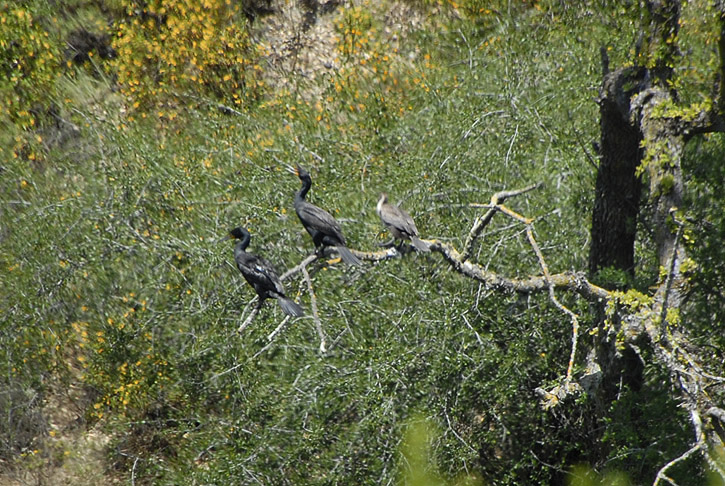

Leucistic birds are exceptionally pale all over. They produce smaller amounts of pigments in all their tissues, making the entire plumage look washed out while not being pure white. Plumage patterns typical of the species, such as a mask or wingbars, often remain detectable.
Since we have a little time to spare, we decide to visit Stevens Creek Reservoir before returning home.
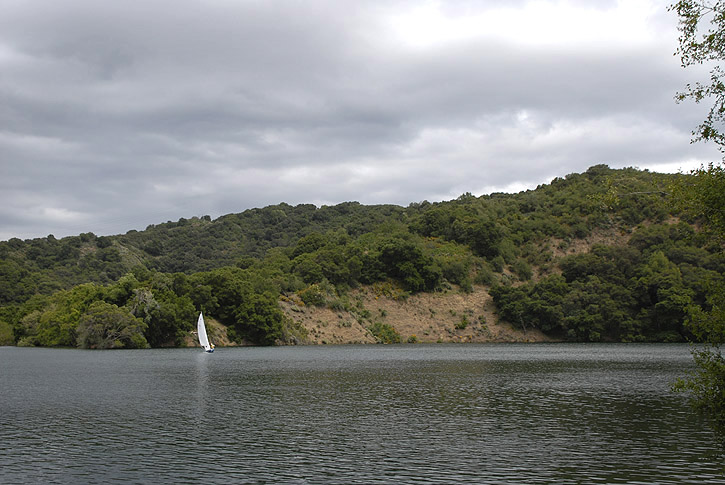
Near a picnic area, ducks are hanging around the shore. One eyes us rather warily as we carefully approach.


Such a handsome waterfowl, as waterfowl go.

The original D.A.

Duck's World.

If it walks like a duck and talks like a duck . . .
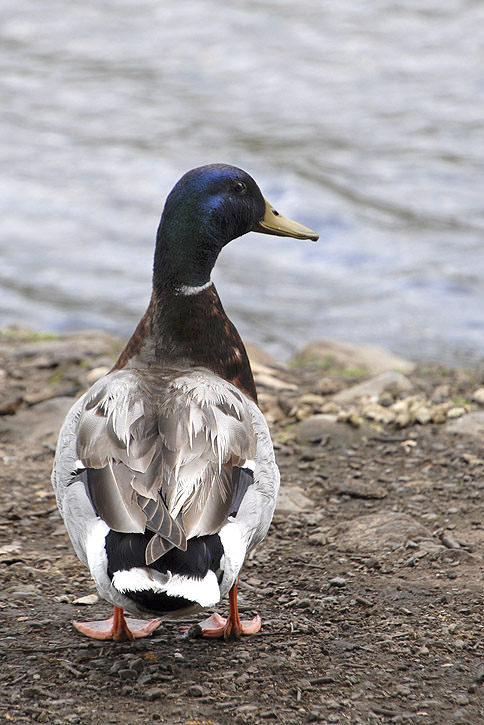
Clarence Nash, I presume?

Oh Hai!

Another look at the reservoir before heading home.


.
On a Saturday threatening rain, D. and I returned to Picchetti Ranch Open Space Preserve to see the vernal pool before it dried up for the summer, and I took these pics.
There are lots of wildflowers in bloom. Here's Field Bindweed and Common Rigid Hedge Nettle.


Bee on Beaked Hawksbeard.

As the trail rises we catch a glimpse of Stevens Creek Reservoir, which is very full after a wet, rainy winter.

We go up the Bear Meadow Trail through oak woodlands, getting another view of the reservoir.


Sticky Monkeyflower, with amorous beetles, and Blue-eyed Grass.


Poison oak is unavoidable in these forests. It can grow in a shrub form, or climb up a tree as a vine, up to 150'. All parts of the plant can cause a rash.


The Bear Meadow Trail, though oak woodland and grassland.


Two pics of Clarkia, one of which conceals a deadly surprise: the last thing a fly ever sees.


California Honeysuckle and Ithuriel's Spear.


Yarrow and Woodland Strawberry.



Golden Yarrow and Pitcher Sage.


Blue Elderberry and Yerba Santa.


There are some butterflies as well. Here is a Variable checkerspot butterfly on Soft Brome.

The trail goes through a stretch of chaparral on a south-facing slope.

Chamise is related to roses but does not have the same scent.

We glimpse another view of Stevens Creek Reservoir as the trail curves around the side of a hill.

The White Fairy Lantern is a stunning bloom.


Another look over the reservoir into the Santa Clara Valley, with the East Bay's Diablo Range in the background.

Poison oak berries are just as rash-inducing as the leaves. All parts of the plant, including twigs, bark and roots, are best avoided.

More field bindweed, a morning glory relative.

Coast Larkspur and Northern Checkerspot butterfly.


The trail brings us closer to the vernal pool.

This juvenile Northern Crab Spider resembles a tick at first glance.

California Everlasting and California Tea, a.k.a. Forest Scurfpea.


Another look over the reservoir into the Santa Clara Valley.

Beaked Hawksbeard looks like dandelions on branched stalks.

Wild oat, and an ancient plum tree with developing fruit, a remnant from the ranching days.


Mule's ears look like dwarf sunflowers.

Finally we reach the pond, a seasonal wetland, or vernal pool, that provides important habitat for many wildlife species, including sensitive amphibians such as California newts, tree frogs and toads. Vernal pools fill up with winter rains but dry up for at least part of the year.


It was a completely dry meadow when we were here last October.
Today there is a mallard duck family on the water.





They are nervous in our presence and fly away after a few minutes.
More pond pics.



I love looking at the surface of the water, the various textures and reflections.






In the shallows at the southeast shore of the pond we see tadpoles in the murky water.

Hefty fallen limbs litter the shore under an enormous blue gum eucalyptus tree at the water's edge. The look like they have suffered an infestation of wood boring beetles.



The contortions of the grain remind me of a topographical map.

The channels made by the wood boring beetles make it look like a tipsy person used a router on the limb.


On the Zinfandel Trail, we pass by a chaparral habitat.

As we head up the Orchard Loop Trail, we see pears on trees dating back to the ranch days when there were orchards here.


California Poppies love the sun.


From the Orchard Loop Trail we get a sweeping view out over the Santa Clara Valley, with the Diablo Range in the background.

Unopened buds of California Everlasting look like little heads of cauliflower.

A western fence lizard basks in the sun at the edge of the Bear Meadow Trail.

When we get back to the trailhead across the road from Stevens Creek Reservoir, I see a pair of Double-Crested Cormorants on a tree at the far shore, one of whom is unusually pale -- a leucistic form of coloration.


Leucistic birds are exceptionally pale all over. They produce smaller amounts of pigments in all their tissues, making the entire plumage look washed out while not being pure white. Plumage patterns typical of the species, such as a mask or wingbars, often remain detectable.
Since we have a little time to spare, we decide to visit Stevens Creek Reservoir before returning home.

Near a picnic area, ducks are hanging around the shore. One eyes us rather warily as we carefully approach.


Such a handsome waterfowl, as waterfowl go.

The original D.A.

Duck's World.

If it walks like a duck and talks like a duck . . .

Clarence Nash, I presume?

Oh Hai!

Another look at the reservoir before heading home.


.